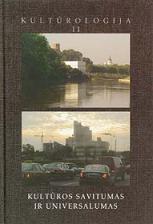XX A. LIETUVOS CHOREOGRAFIJA: SAVITUMO ILIUZIJOS
LITHUANIAN CHOREOGRAPHY IN THE 20TH CENTURY: ILLUSIONS OF DISTINCTIVENESS
Author(s): Helmutas ŠabasevičiusSubject(s): Theatre, Dance, Performing Arts
Published by: Lietuvos kultūros tyrimų
Keywords: Lithuanian Choreography; ballet; performing arts; distinctiveness
Summary/Abstract: Due to their nature all the performing arts – including ballet – possess most of all transit elements: a permanent and dynamic exchange of ideas and creative power is taking place here, therefore it is quite risky to talk of the distinctiveness of the creative forms that belong to this category of art. Attempts to determine what makes the artistic ideas and forms in individual nations specific, unique and inimitable and to discover the recipe for the distinctiveness have been made from the mid–19th century when the “national spirit” ideas started spreading in Europe. The distinctiveness of Lithuanian choreography primarily owes to historical circumstances: it is the branch of art that has been the last to join the ranks of professional arts; the issues of the professional training of its creators have for long been (and remain) quite problematic; its vitality has been (and still is) frequently maintained by amateur initiatives and external – thus transit – elements. In the middle and in the second half of the 20th century, it was aimed at maintaining a balance between the distinctive, original choreography and the imported one. Vivid works were created by the Lithuanian choreographers Bronius Kelbauskas, Vytautas Grivickas, Elegijus Bukaitis, and Vytautas Brazdylis. The choreographers of the late 20th century – Jurijus Smoriginas, Anþelika Cholina – are forced to compete with a flux of transit choreography, which is formed by foreign choreographers such as Vladimir Vasiljev, Boris Eifman, and Krzysztof Pastor.
Journal: Kultūrologija
- Issue Year: 2004
- Issue No: 11
- Page Range: 286-300
- Page Count: 15
- Language: Lithuanian

